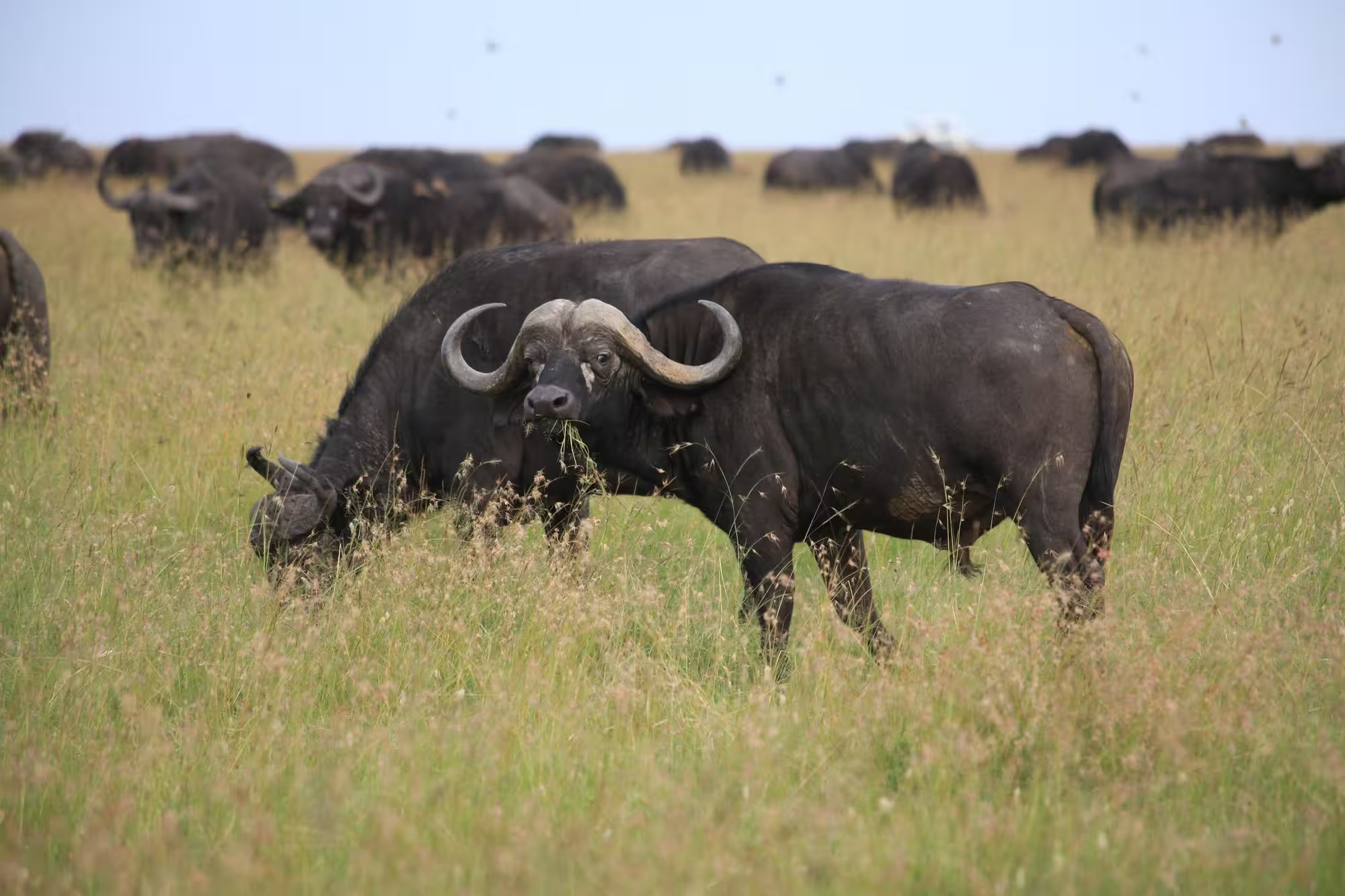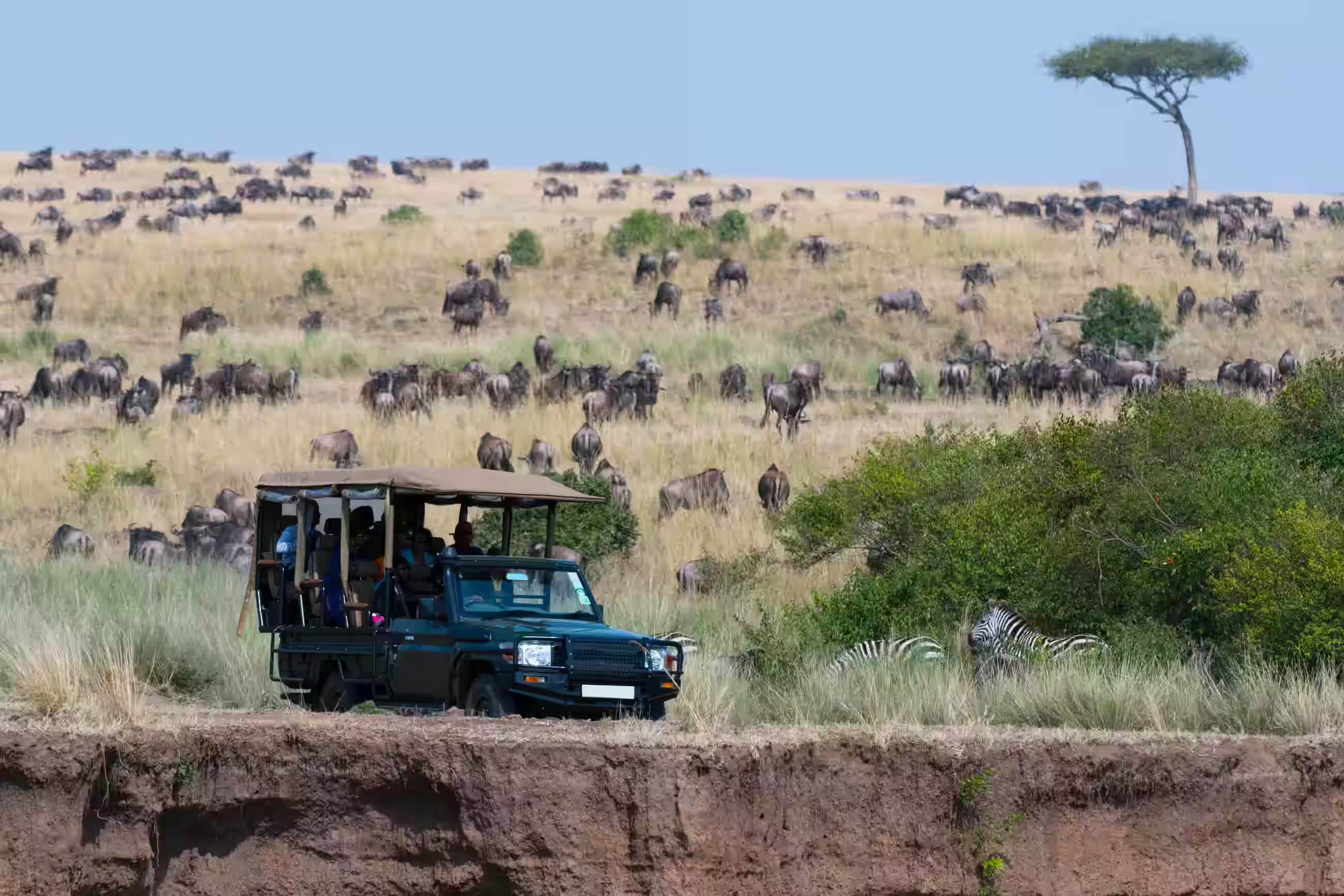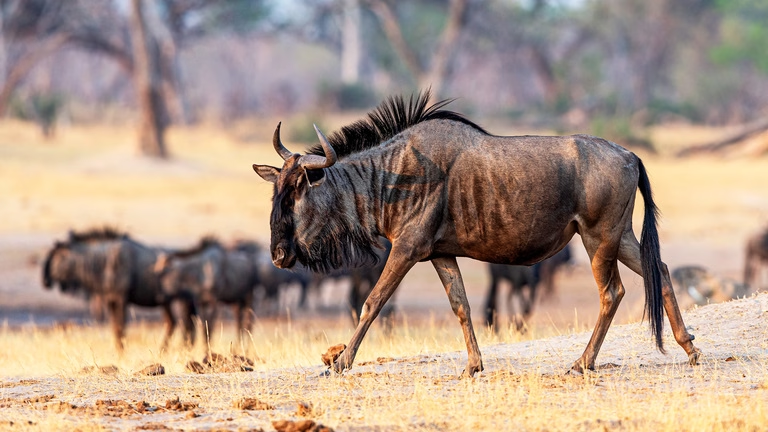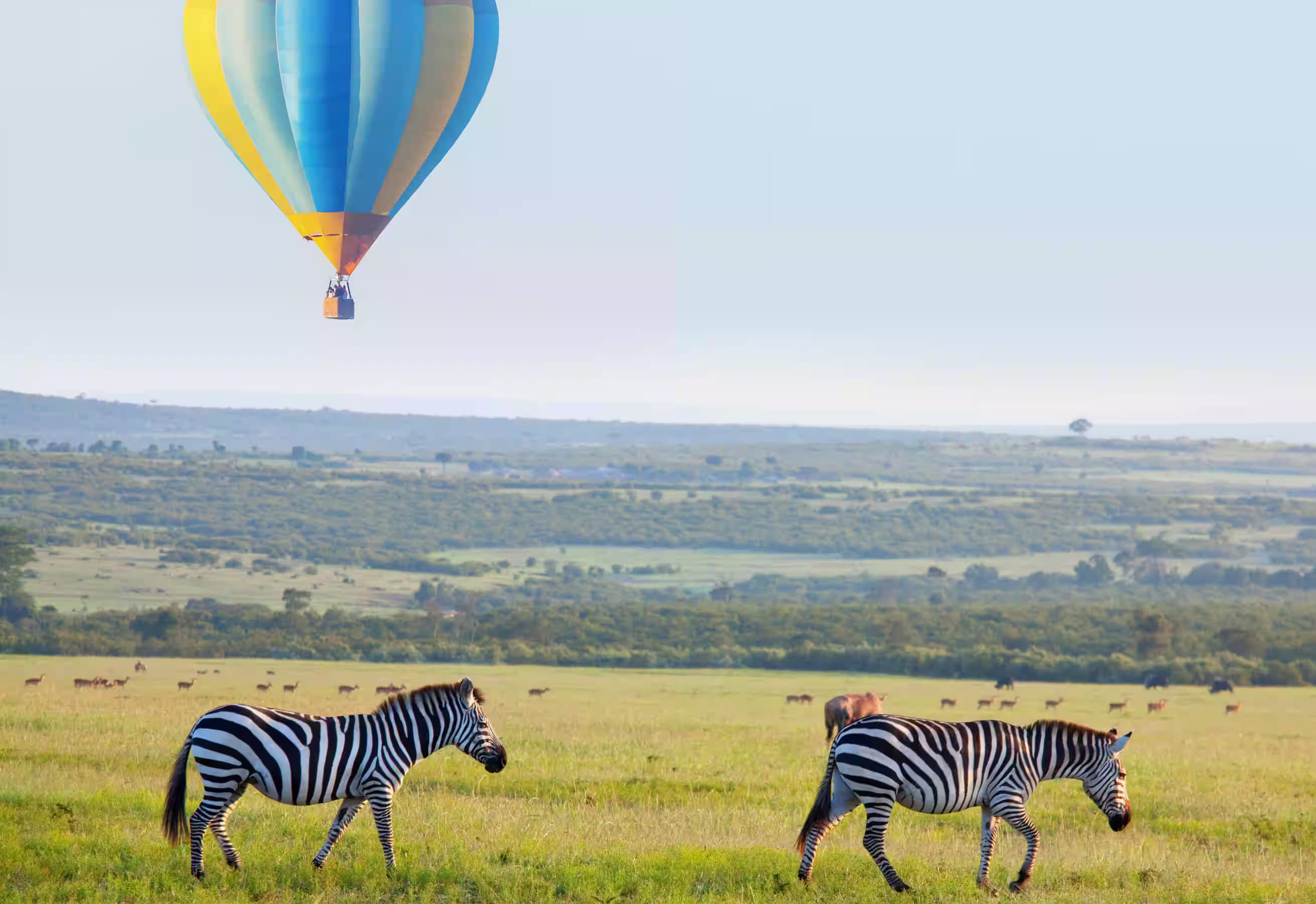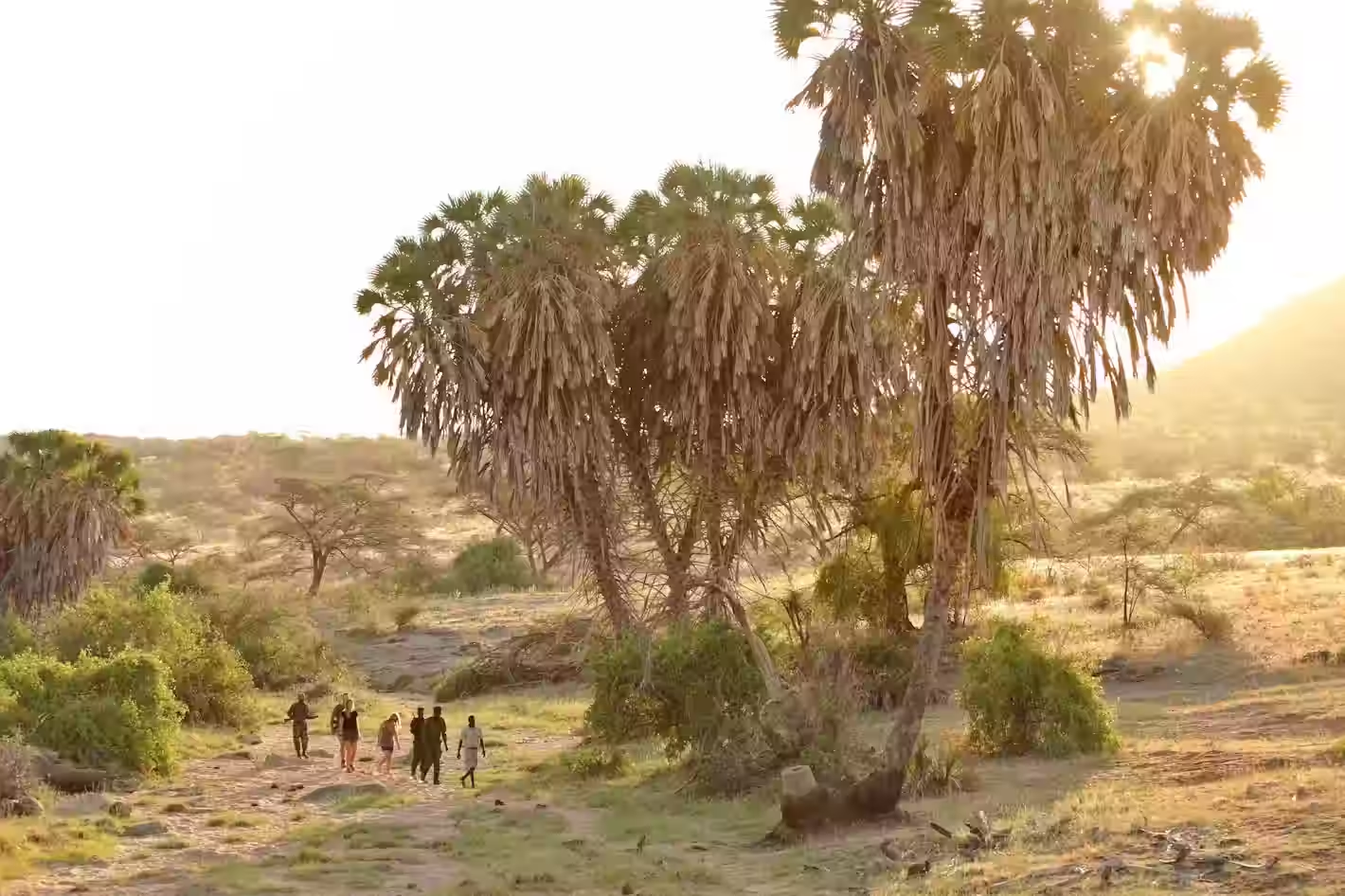The Spectacular Wildlife Event
This is one of the most breathtaking wildlife spectacles in East Africa, known as the Great Wildebeest Migration. During the annual Wildebeest Migration, over 1.5 million wildebeest, along with zebras and gazelles, go on a journey across the Serengeti National Park (Tanzania) and one of the best safari locations in Kenya (Maasai Mara ) in search of fresh grazing land.
This incredible natural event is often called “The Greatest Show on Earth” and is a must-see for wildlife enthusiasts.
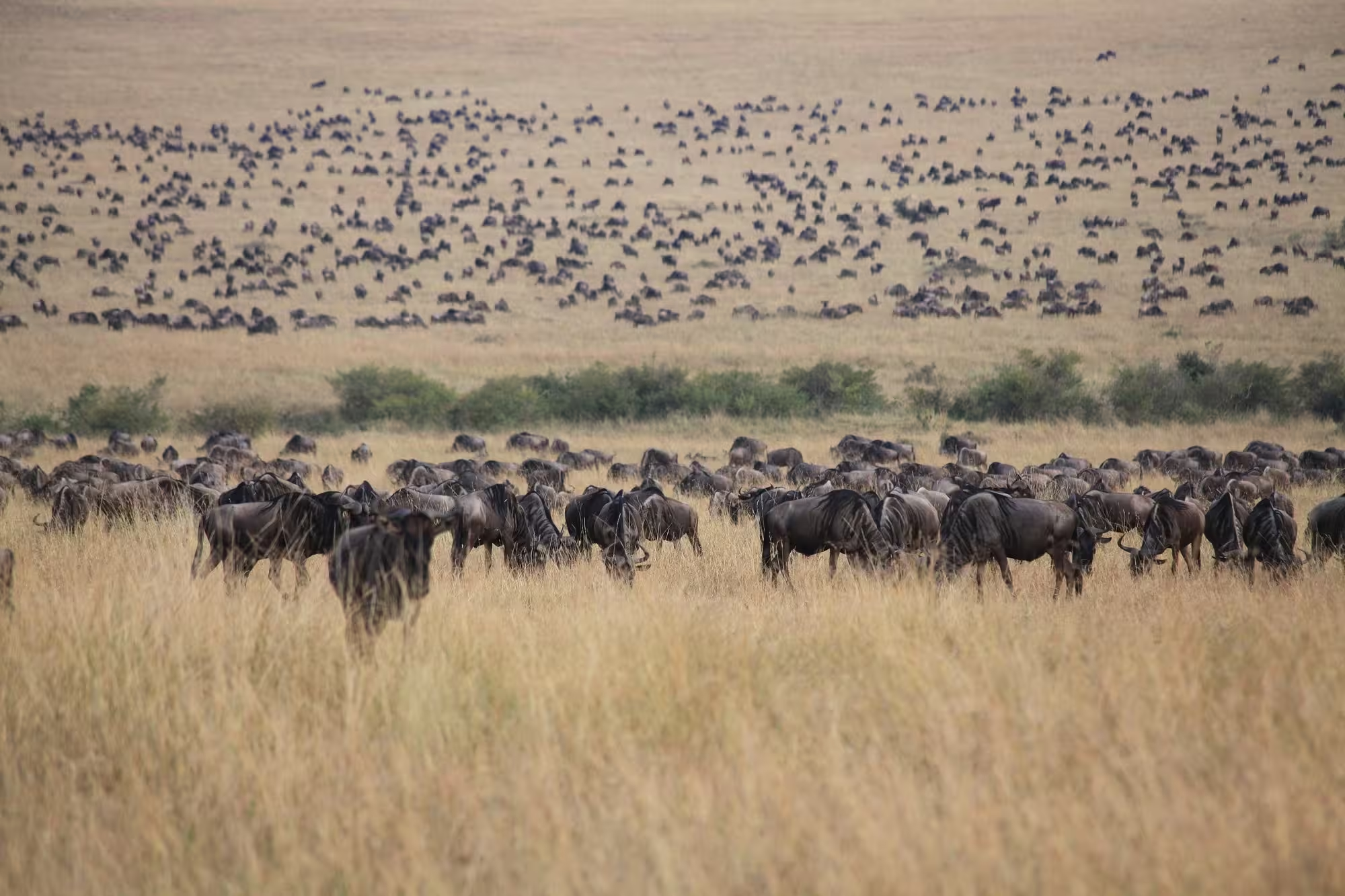
The Greatest Show on Earth: An Introduction
The Wildebeest Migration is a continuous movement of herds across the Serengeti-Mara ecosystem throughout the year; the highlight of the Great Migration is the spectacular Mara River crossings. The animals have to jump into the crocodile-infested Mara River while crossing over to Mara from Serengeti. The migration is driven by:
- Rainfall patterns—Wildebeest follow the rains for fresh grass.
- Survival instincts—predators like lions and crocodiles make this journey dangerous.
- Breeding cycles—The calving season (February) sees thousands of births.
Meet the Stars of the Great Migration
- Wildebeest (1.5 million)—The main players of the migration are the wildebeest.
- Zebras (200,000+) – Help navigate and detect predators.
- Gazelles (500,000+) – Join the herds for safety

Where the Herds Are, and When: The Annual Route
The wildebeest migration follows a circular route between Tanzania and Kenya. Here’s a month-by-month breakdown:
January–March: Calving Season in Southern Serengeti National Park. The calving season happens between the months of January and March in the Ndutu Plains.
During the calving season, more than 500,000 calves are born in just 3 weeks. This is the best time to visit to see the predators hunting vulnerable newborns.
April–May: The Long Rain Season (Western Serengeti)
During these months, the Wildebeest Migration animals are moving from the Central to the Western Serengeti. The herds begin to move northwest as the rains begin. These months are difficult for safari tours, as the muddy roads make safaris difficult.
June–July: The Grumeti River Crossing (Tanzania)
In June and July, the animals are in the Grumeti Reserve; they begin their crossing of the crocodile-infested river. The best time to observe the dramatic predator-prey action is.
August–October: The Mara River Crossing (Kenya-Tanzania Border)
This is the most spectacular moment of the Wildebeest Migration, where the herds cross over to the Masai Mara (Kenya) from the Northern Serengeti. This is one of the most iconic and dangerous moments of the river crossing.
There is nothing that can be compared to seeing those tense moments when the animals are braving to gain the courage to cross the crocodile-infested Mara River. Thousands drown or are eaten by crocodiles.
November–December: Return to the Serengeti
These are the months in which the herds begin to return to Serengeti National Park through Loliondo & Seronera, both in Tanzania. The herds head back south as the rains return. This is the best time to visit and photograph the herds, as there are fewer crowds.

Where to Witness the Migration: Top Viewing Spots
1. Masai Mara National Reserve, Kenya
The best place to see the wildebeest migration is at the Masai Mara National Reserve in Kenya between August and late October.
The highlight is the Mara River crossing, where you can witness the big cat hunts.
You can read more about the top 10 Maasai Mara luxury safari lodges and camps in our article

2. Serengeti National Park, Tanzania (Year-Round)
The highlight of the Serengeti National Park is the calving season, which happens at Ndutu and the Grumeti River crossings. The best place to stay is at the Four Seasons Safari Lodge, Serengeti Under Canvas
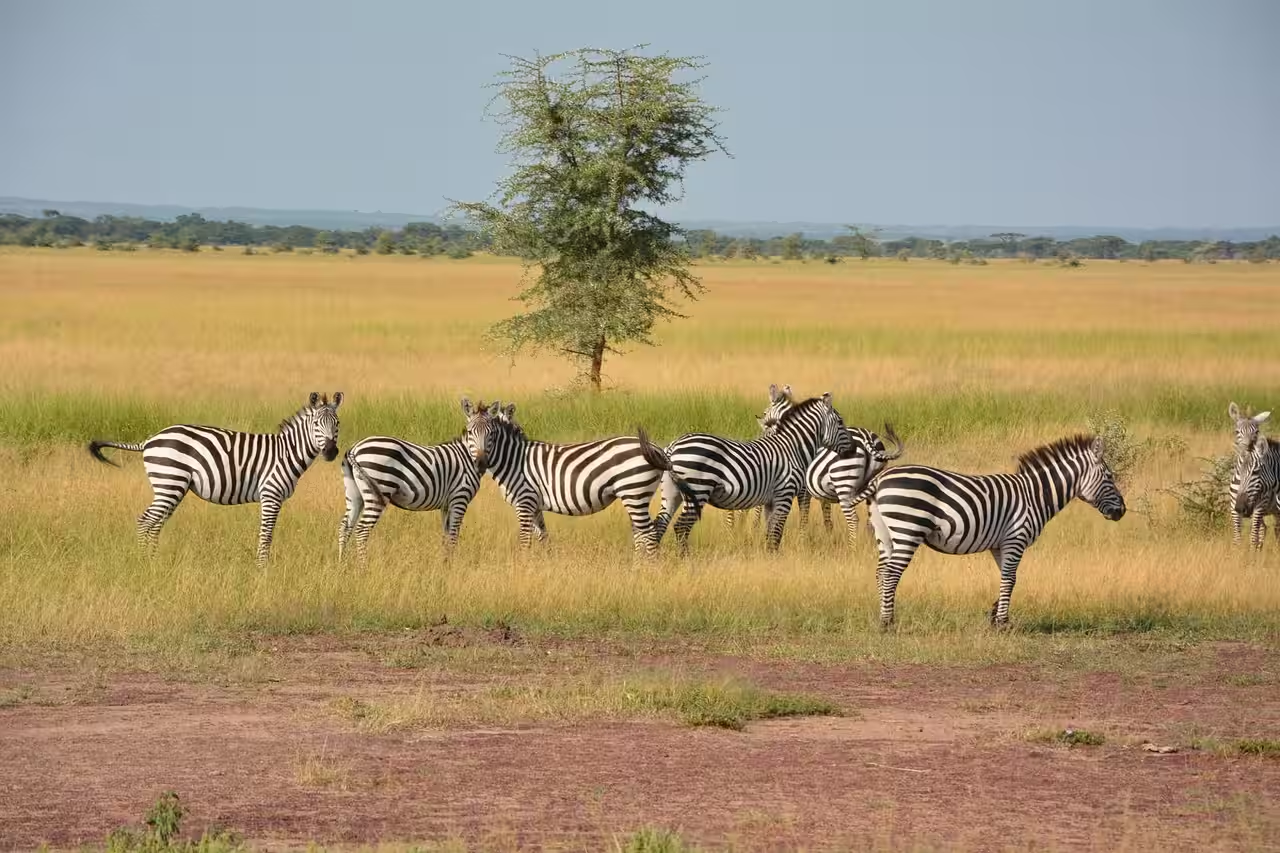
3. Grumeti Reserve, Tanzania (June–July)
The main focus here is on the private conservancies, where there are fewer tourists, with the best lodges being Singita Sasakwa and Grumeti Serengeti Tented Camp

4. Lobo Area, Northern Serengeti (July–September)
This is the area to visit and witness the wildebeest migration gathering as they prepare to cross into Kenya. The best place to stay and see it unfolding is at Lemala Kuria Hills.
